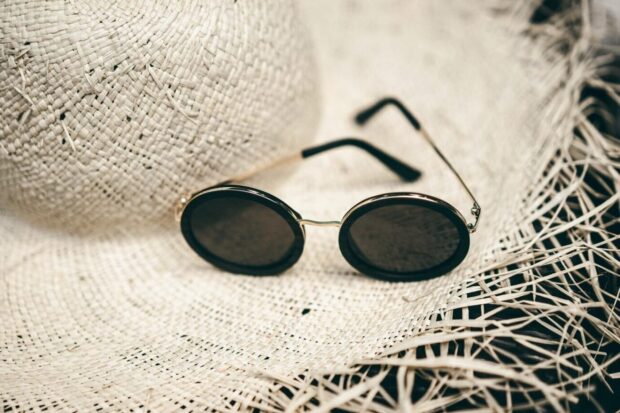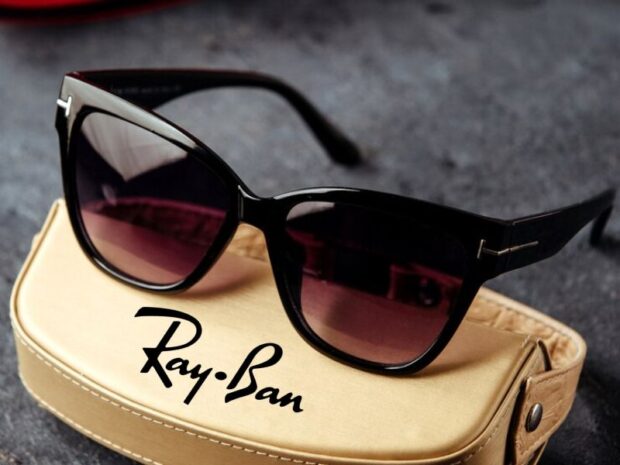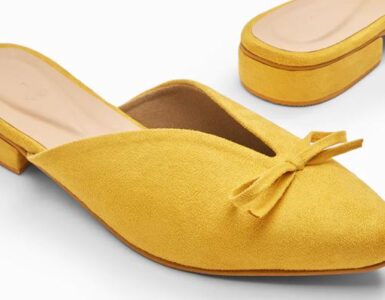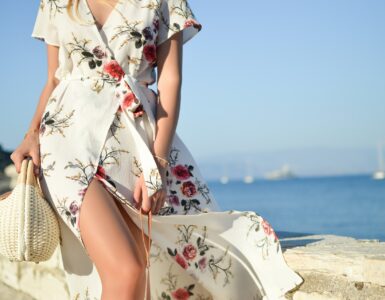Designer sunglasses from brands like Ray-Ban, Oakley, and Chanel are recognized worldwide. But their popularity has led to an enormous market for counterfeit and knockoff shades that are made to copy the originals. While fake sunglasses might look similar and sell for much cheaper, their inferior quality cannot protect eyes from UV rays properly.
In this guide, the experts at Olympic Eyewear explain to us how to safely identify authentic designer sunglasses through careful inspection of certain visual signs.
Inspect All Logos Closely
The logos marking designer sunglasses represent years of both brand legacy and quality assurance. Fakes often have incorrectly shaped, sized, or placed logos that try to mimic the original marks. On Ray-Bans, verify that the metallic Ray-Ban or RB icons have precise lettering without uneven spacing, blurry edges, or smudging.
The letters should shine clearly rather than appearing dull or faded. Their logo coloring should exactly match that used by the company. Oakley logos are deeply engraved directly on the lens for the very reason of preventing replication. With “designer” brand fakes, look out for uneven logo stickers that lack fine detail when magnified instead of directly stamped markings.
Examine Text Fonts and Spacing
Along with logos, text font and letter spacing should adhere strictly to the company’s unique branding specifications. For example, Chanel prints its iconic interlocking “C” logo and “Chanel” name in a specific Sans Serif bold font.
Fakes might use the wrong style that appears obviously different when compared side-by-side to authentic versions. Subtle differences in text colors, textures, shapes, sizes, and spacing also give away low-quality replicas. Any unevenness, blurriness, or asymmetry with fonts might indicate inauthentic production.
Inspect Hinge and Temple Craftsmanship

The hinges connecting arms to frames and temples extending back over ears show quality construction techniques with luxury designer sunglasses. Carefully hold the frames and check that the hinge action feels smooth and sturdy rather than flimsy or stiff.
Authentic designer joints typically have distinct branding etchings and covert security markers. Fakes might have no markings, uneven logos, or wiggly settings. Branded temples should have evenly wrapped leather or ribbon tips without ragged edges or weak glue.
Confirm Country of Origin
Authentic products from sunglass designers like Prada and Gucci guarantee production in Italy or France on inner temples or frames. Fakes often incorrectly state country of origin or use phrases like “Made in Style” rather than stating an actual place.
Check the fine print inside arms and on nose pads for “Made in…” home countries matching where the brand originates from. Apart from location, temple printings might also contain accurately spelled model numbers with proper accompanying text, like “lens category” numbers.
Match Accessories Like Cases and Cleaning Cloths

Beyond the sunglasses themselves, included accessories should adhere to original brands’ designs. For example, Dior and Tiffany each have signature hard case shapes, textures, logos, and details apparent at first glance. Check that any case included matches the texture and colorway expected from the brand.
Inside, compartments made to hold glasses should have smoothly stitched logos rather than irregular glued materials. Microfiber cleansing cloths should feature accurately colored and placed iconography corresponding to each fashion house.
Essentially, every accessory element echoes the unwavering excellence of luxury brands downplayed by fakes focused solely on replicating sunglass shapes themselves.
Conclusion
Carefully inspecting these visible signs, from fonts to joint craftsmanship to paperwork, means that recognizing authentic designer sunglasses becomes straightforward. Searching out trustworthy sellers that are committed to transparency also minimizes the risk of ending up with an illegal knockoff.
Although fakes bear a passing resemblance visually, their truthful inferiority emerges under close examination, guided by what brands genuinely represent through decades of excellence.





























